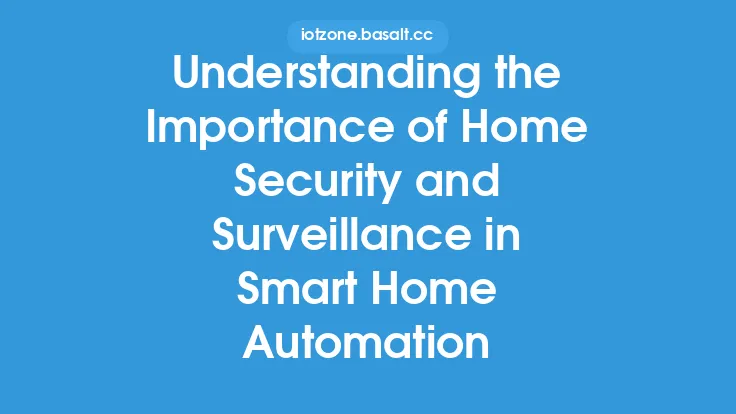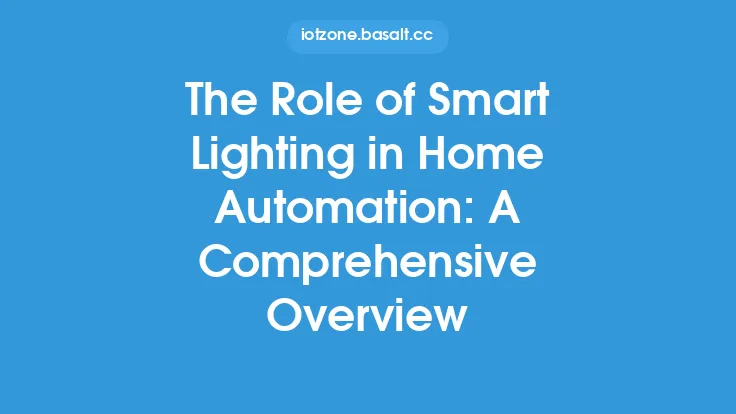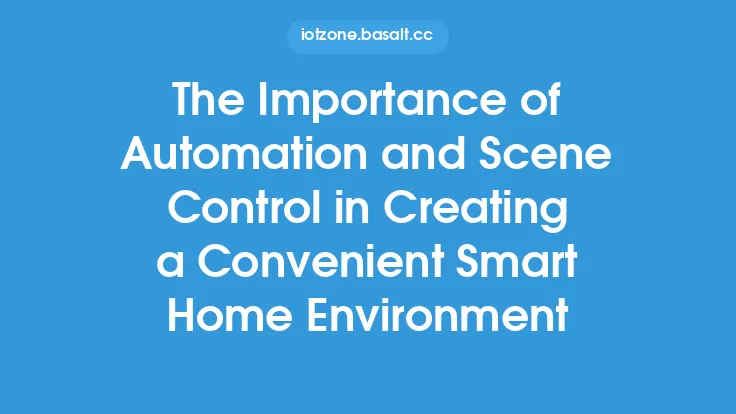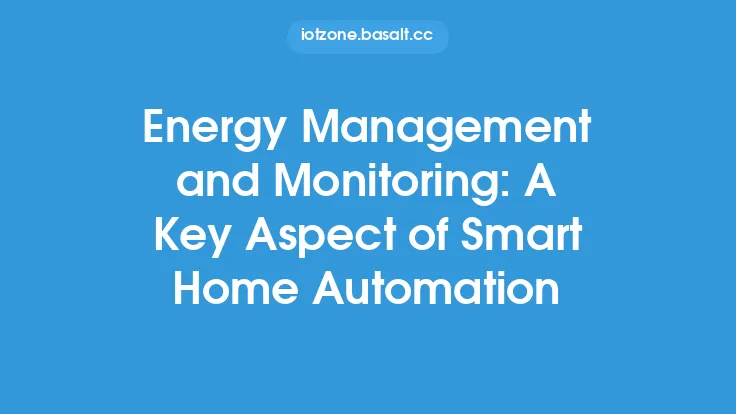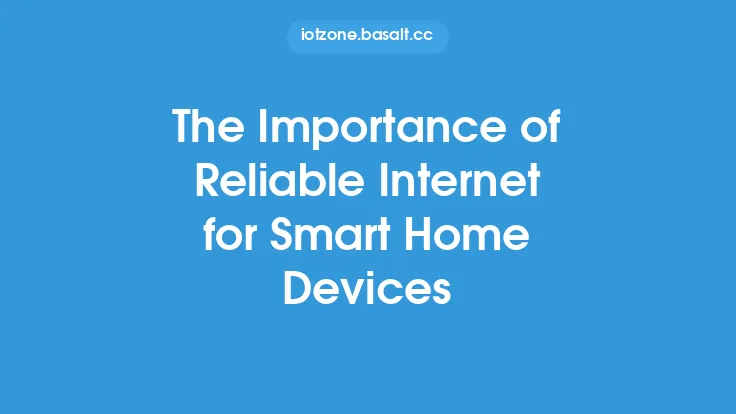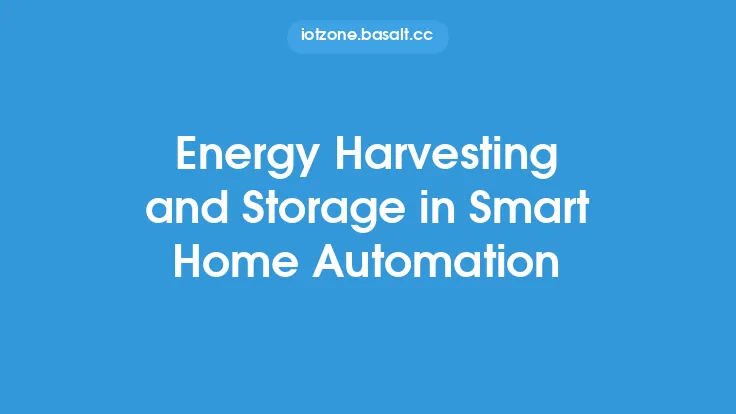The concept of smart home automation has revolutionized the way we live and interact with our living spaces. One of the key aspects of smart home automation is energy management and monitoring, which plays a crucial role in reducing energy consumption, saving costs, and promoting sustainability. Energy monitoring is the process of tracking and analyzing energy usage in real-time, allowing homeowners to identify areas of inefficiency and take corrective measures to optimize energy consumption.
Introduction to Energy Monitoring
Energy monitoring involves the use of specialized devices and software to track energy usage in a home or building. These devices can be installed at the circuit level, appliance level, or even at the individual outlet level, providing a detailed breakdown of energy consumption patterns. The data collected by these devices is then transmitted to a central hub or cloud-based platform, where it can be analyzed and visualized in real-time. This allows homeowners to gain a deeper understanding of their energy usage habits and identify opportunities for improvement.
Benefits of Energy Monitoring
The benefits of energy monitoring in smart home automation are numerous. Some of the most significant advantages include:
- Energy Savings: By identifying areas of inefficiency and taking corrective measures, homeowners can reduce their energy consumption and lower their utility bills.
- Increased Efficiency: Energy monitoring helps homeowners optimize their energy usage patterns, reducing waste and promoting more efficient use of energy.
- Enhanced Comfort: By optimizing energy consumption, homeowners can create a more comfortable living environment, with consistent temperatures and lighting levels.
- Extended Equipment Life: Energy monitoring can help identify potential issues with appliances and systems, allowing homeowners to take proactive measures to extend their lifespan.
- Environmental Benefits: By reducing energy consumption, homeowners can lower their carbon footprint and contribute to a more sustainable future.
Types of Energy Monitoring Systems
There are several types of energy monitoring systems available, each with its own unique features and benefits. Some of the most common types include:
- Whole-House Energy Monitors: These systems track energy usage at the circuit level, providing a comprehensive overview of energy consumption patterns.
- Appliance-Level Energy Monitors: These systems track energy usage at the individual appliance level, allowing homeowners to identify which appliances are using the most energy.
- Outlet-Level Energy Monitors: These systems track energy usage at the individual outlet level, providing a detailed breakdown of energy consumption patterns.
- Smart Plugs: These devices can be plugged into individual outlets, allowing homeowners to track energy usage and control appliances remotely.
How Energy Monitoring Works
Energy monitoring systems typically consist of several components, including:
- Sensors: These devices track energy usage and transmit data to a central hub or cloud-based platform.
- Gateways: These devices connect sensors to the internet, allowing data to be transmitted and analyzed remotely.
- Software: This is the brain of the energy monitoring system, analyzing data and providing insights into energy usage patterns.
- User Interface: This is the interface through which homeowners interact with the energy monitoring system, viewing data and receiving alerts and notifications.
Technical Requirements for Energy Monitoring
To implement an energy monitoring system, several technical requirements must be met. These include:
- Communication Protocols: Energy monitoring systems use standardized communication protocols, such as Zigbee, Z-Wave, or Wi-Fi, to transmit data between devices.
- Data Storage: Energy monitoring systems require sufficient data storage capacity to handle the large amounts of data generated by sensors and other devices.
- Data Analytics: Energy monitoring systems require advanced data analytics capabilities to analyze data and provide insights into energy usage patterns.
- Security: Energy monitoring systems must be designed with security in mind, protecting sensitive data and preventing unauthorized access.
Best Practices for Implementing Energy Monitoring
To get the most out of an energy monitoring system, several best practices should be followed. These include:
- Conducting an Energy Audit: Before implementing an energy monitoring system, it's essential to conduct an energy audit to identify areas of inefficiency and opportunities for improvement.
- Selecting the Right System: Homeowners should select an energy monitoring system that meets their specific needs and budget.
- Installing Sensors and Devices: Sensors and devices should be installed correctly, following manufacturer instructions and ensuring accurate data collection.
- Monitoring and Analyzing Data: Homeowners should regularly monitor and analyze data, identifying areas for improvement and taking corrective measures.
Conclusion
Energy monitoring is a critical component of smart home automation, providing homeowners with the insights and tools they need to optimize energy consumption and reduce waste. By understanding the benefits and types of energy monitoring systems, as well as the technical requirements and best practices for implementation, homeowners can take the first step towards creating a more sustainable and energy-efficient living environment. Whether you're looking to reduce your energy bills, promote sustainability, or simply create a more comfortable living space, energy monitoring is an essential tool that can help you achieve your goals.
